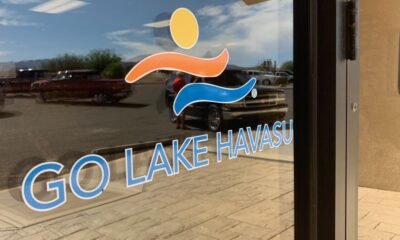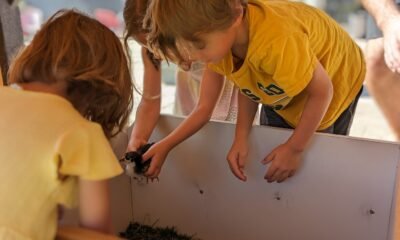agriculture
U of A Set to Supercharge DK Ranch Farm Science Initiatives

The University of Arizona plans to renovate its DK Ranch experimental station in Cornville, a site that has seen limited use for nearly a decade. This initiative aims to enhance educational opportunities for local students and agriculturalists.
The DK Ranch, spanning over 45 acres along Oak Creek, was gifted to the university in 2017 by the family foundation of Phoenix attorney Daniel Cracchiolo. Dean Shane Burgess from the College of Agriculture acknowledged the ranch’s underutilization, stating, “We haven’t been doing as much as we would like.” Current research at the ranch includes grass-finishing beef and exploring organic soil fertilization to help local growers meet certification standards.
In collaboration with architects Dan Jensvold and Stephen Thompson, known for projects like the Sedona Cultural Park, the university is developing plans to transform the ranch. Burgess expressed optimism about their expertise, highlighting their experience with local county supervisors and private sector partners.
Thompson described the vision for the ranch as similar to the Dells master plan, incorporating educational programs, summer camps, and principles of regenerative agriculture focused on local cash crops and riparian restoration. Jensvold echoed this sentiment, suggesting an eco-tourism component to the project.
Community involvement plays a crucial role in shaping the ranch’s future. Burgess emphasized the need for input from local stakeholders to determine what facilities and programs would best serve the community. The focus on regenerative agriculture aligns with local climate and market conditions, presenting an opportunity for significant growth in educational programs like 4-H.
Burgess explained that regenerative agriculture practices emphasize sustainable food production methods, relevant to the Verde Valley’s unique conditions. He remarked, “What people are now calling regenerative agriculture is just practices that are consistent with maintaining our ability to produce from the land.”
The archetype of regenerative practices, as detailed by agronomist Masanobu Fukuoka, is about simplifying farming techniques in harmony with nature. The objective is not only local food security but also economic growth through the development of specialty foods for the tourism sector, moving away from traditional commodity markets.
DK Ranch is envisioned as a “land laboratory” capable of addressing crucial food security questions that could benefit the private sector. Food sovereignty, a term popularized by the farmers’ rights movement, underscores the importance of local control in food production systems.
Recent research underscores the concentration of agricultural production within a few corporations, highlighting the need for more local autonomy. Burgess noted, “It’s much more about lifestyle, agriculture, water use, that sort of thing,” suggesting that DK Ranch can significantly impact local agriculture.
Integrating agricultural operations with the Verde Valley’s tourism economy is another goal for the ranch. Burgess detailed how sustainable agriculture can support local businesses, citing the recent rise in wine production in the Sonoita region as an example of local economic sustainability benefiting from regional agriculture.
The ranch’s advantageous location along Oak Creek and its existing irrigation infrastructure also present significant benefits for experimental farming. Burgess stated, “The good thing about doing it there is even if we do something that we’re testing on purpose that uses more water than we would rationally like to…,” viewing the ranch as a testing ground for sustainability practices.
As a focus area for the university’s future planning, the Verde Valley serves as a model for integrated ecosystems. Burgess concluded, “There’s a real opportunity for many places in the nation to be looking at the Verde Valley for many aspects — social aspects, science aspects — of which the infrastructure at DK would just be one contributor.”


















